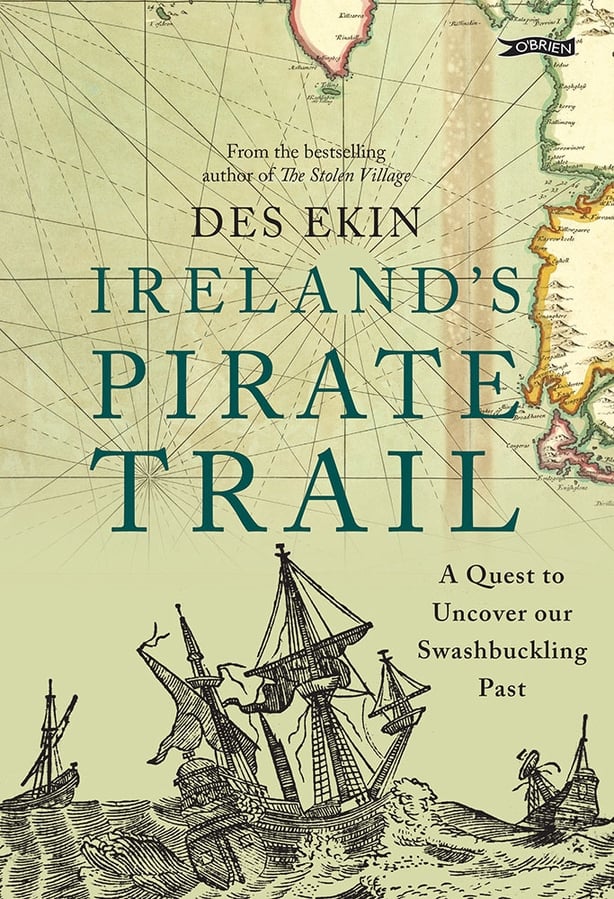Irish history is traditionally seen in the context of the gradual conquest of the Gaelic Irish. Its story of piracy has not in the main inspired historians to put pen to paper. Des Ekin has risen to the challenge.
We really do not hear much about Irish pirates. This is surprising given that there are famous references such as our patron saint St Patrick being kidnapped in Wales by Irish pirates in the fifth century. And then there was the 'Pirate Queen' Grace O'Malley in the seventeenth century. But until now, no-one has compiled a full history of the subject. Des Ekin's book Ireland's Pirate Trail addresses this gap - and the details will surprise a lot of people.
The book describes Killybegs, Co Donegal and Baltimore, Co Cork as one-time pirate havens, literally full of carousing buccaneers - both native and foreign – and their ships laden with treasure. Pirate clans on the West and Southwest coasts - O'Driscolls, O'Sullivans, O'Flahertys and O'Malleys - commanded forces of up 2,000 men, with fleets of up to 27 ships, only slightly smaller than the Spanish fleet that landed at Kinsale in 1601.
Early 17th Century English government sources complained that there were only two places where pirates ruled effectively unchallenged - one was the Barbary Coast of North Africa and the other was the southwest coast of Ireland. They complained that Baltimore was effectively a pirate economy, trading in pieces of eight and Barbary ducats.
Following a peace deal between England and Spain in 1604, the West coast of Ireland s became for a time 'pirate central' due to its proximity to transatlantic trade routes. Pirates need a secure base where the rule of law does not run, and 17th century Ireland had plenty of such areas and an abundance of small remote inlets. The country also seems to have had easily corruptible officials willing to turn a blind eye in exchange for a bribe. These were known as 'land pirates' and some became enormously wealthy.

Irish history is traditionally seen in the context of the gradual conquest of the Gaelic Irish. Its story of piracy - which essentially involves murder, thievery and slave trading – has not in the main inspired historians to put pen to paper. This book goes to the opposite extreme of largely ignoring the wider political and ethnic conflicts. Author Ekin describes a 500-year war between the O’Driscoll pirates and the townspeople of Waterford, but does not mention it was a conflict between a Gaelic Irish tribe and Old English, descendants of the Normans.
He argues that one of the factors that ended Baltimore’s time as a pirate haven was the slave raid in 1631 by Barbary pirates and Ottoman soldiers, which led to the capture of 107 people who were mainly New English Puritan settlers. How this Puritan settlement co-existed with pirates, the Gaelic Irish and the old English is not made clear on the page. However, the author has written a previous work concerning this raid called The Stolen Village. It was during that research that he discovered stories of Irish piracy.
Rather than taking a linear approach, Ekin tells the story of Irish pirates by location, traveling around the coast to bring pirate tales to life. He is a former tabloid journalist so the writing is concise and jaunty, but does seem rushed as times. There is repetition and some inaccuracies. For instance he repeats the story as fact that the phrase 'By Hook or By Crook' derived from from Cromwell’s description of his intention to take Ireland either by Hook Head in Wexford or Crook in Waterford. However the phrase is known to predate Cromwell by several centuries. The book contains no index while the source notes are not easy to follow.
All in all an interesting read, both as a travelogue and as a piece of history that has been overlooked.




